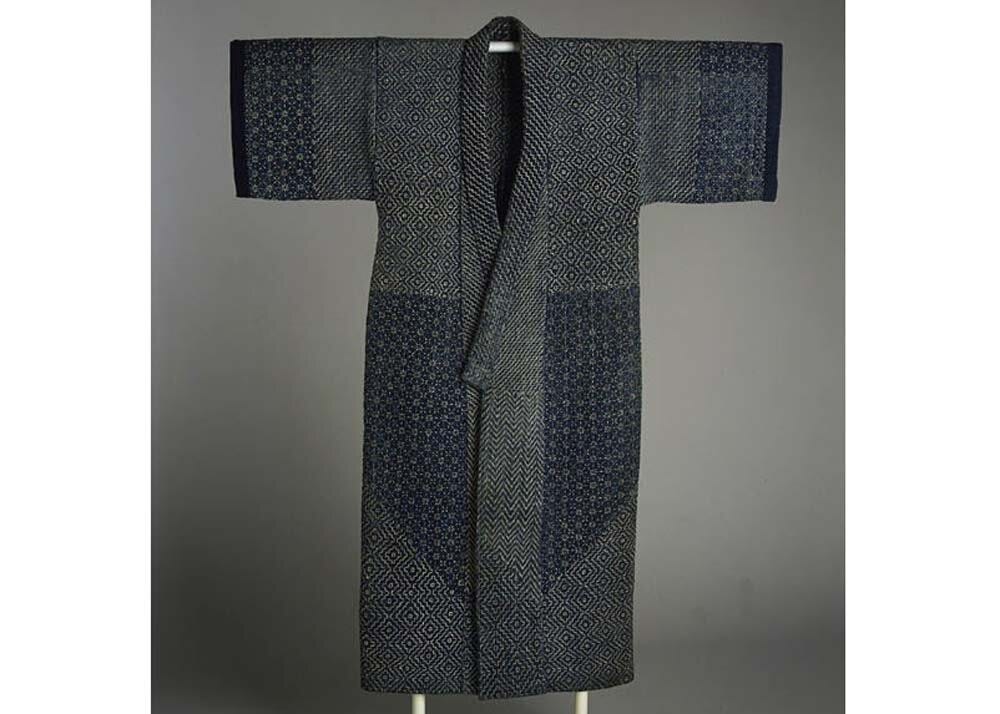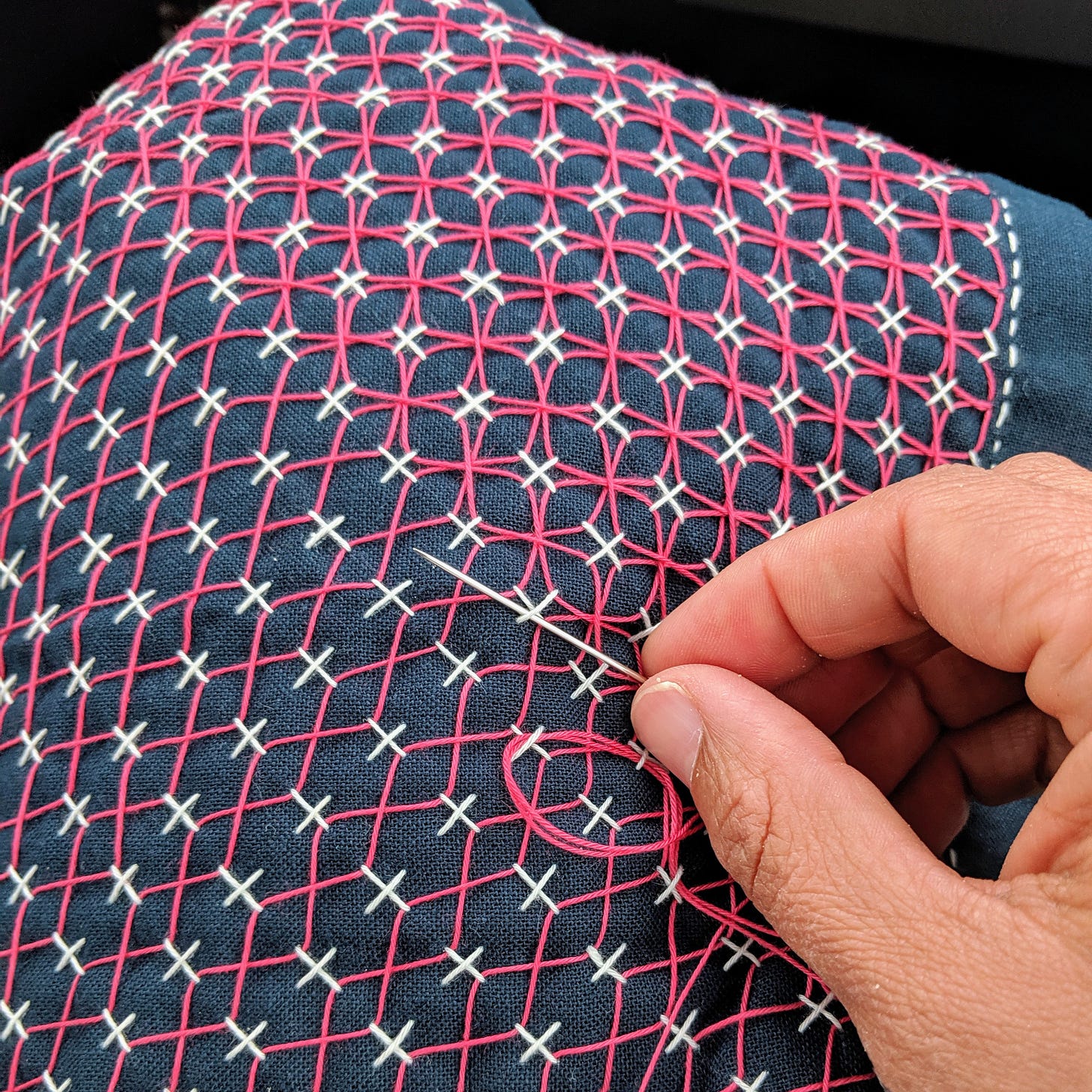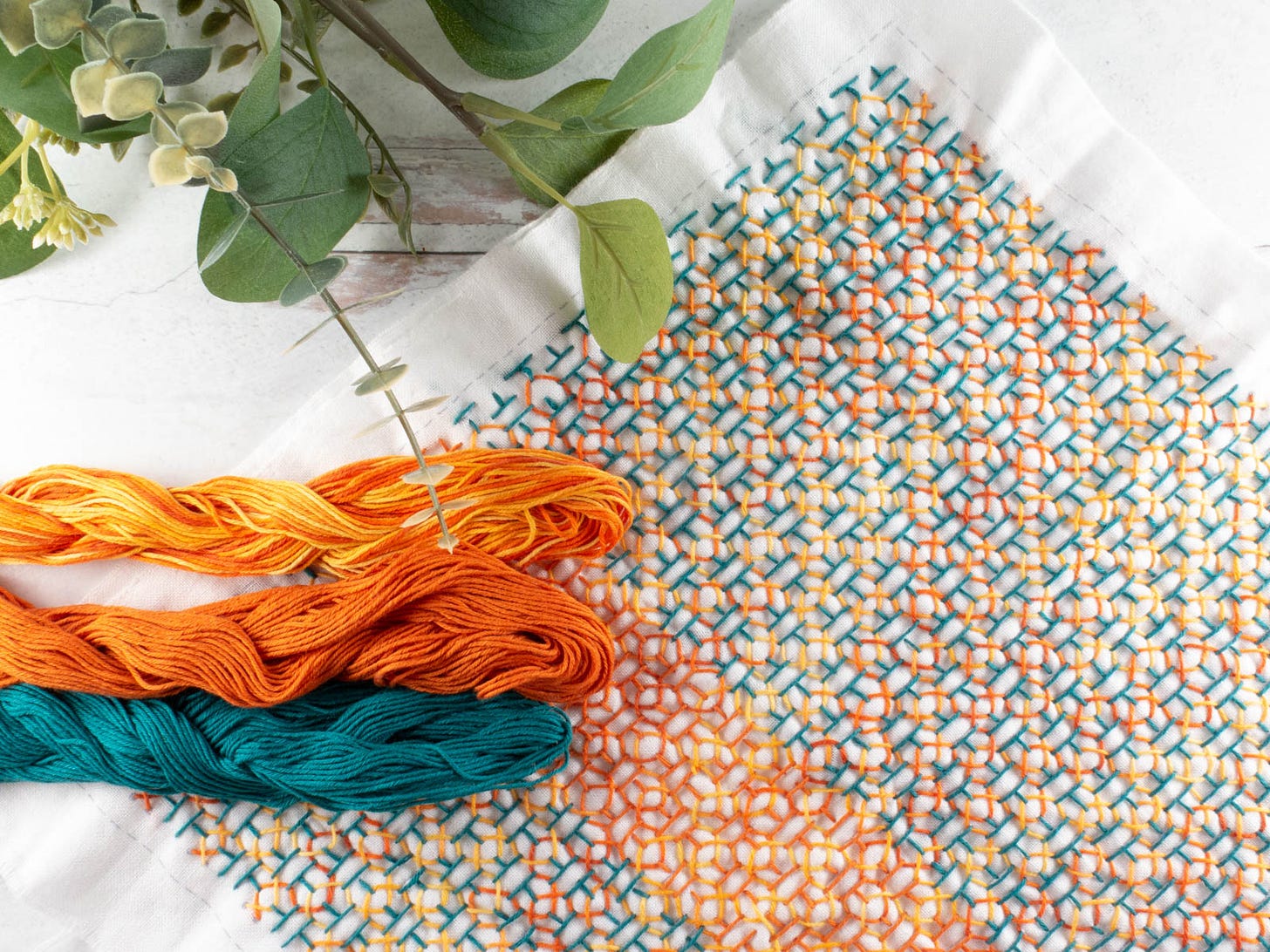A Brief History of Sashiko
The evolution from essential daily task to a modern decorative art form
In my early twenties, I worked as a Coordinator for International Relations at City Hall in Nobeoka, a small fishing town on the southern island of Kyushu, Japan. During the two years that I spent living and working there, I was tasked with anything that my supervisor deemed as “international” from teaching advanced English classes for the community to hosting a weekly “international news” program on local access television to organizing world dance showcases. It was a fun and challenging job that I loved. When I left to return to the States for grad school, I was awarded a Goodwill Ambassadorship by the mayor of my prefecture.
Japan plays a major role in my shop and my crafting life in general as many of my favorite stitching supplies are made in Japan, and I am an avid Sashiko stitcher. I am honored to share my experiences and admiration of a country that was so warm and welcoming to me and that taught me so much over the years.
When I teach Sashiko classes, I always start with a brief history lesson because I think it is important to understand where Sashiko came from in order to be able to appreciate its cultural significance and meaning. So, let’s take a stroll into history back to the Edo Period (1603-1867) when the Tokugawa Shogunate1 implemented a policy of isolationism throughout Japan, known as Sakoku, and a strict social hierarchy.
Trade with other countries was highly restricted during this time, so easy access to essentials, like fabric and fiber, was limited. Homespun cloth was labor and time intensive, so mending clothing to extend its life became an essential daily task for the working class. The Shogunate enacted a series of sumptuary laws2 that dictated what different groups of people were permitted to wear in order to further cement the strict separation of the social classes. These laws prohibited commoners from wearing luxurious fabrics, like silk, and outlawed the use of bright colors and elaborate embroidered techniques on clothing as these were reserved for the beautiful intricate silk kimono worn exclusively by the upper class. The working class had to limit their wardrobe to white, blues, grays or brown and could not have decorative stitching that was larger than a grain of rice. From these social conditions, Sashiko was born.
Sashiko began as a mending technique among the working class. In order to extend the life of a jacket or to add much needed warmth to an outer layer, patches of old fabric were added onto worn areas using a running stitch. Instead of allowing the restrictive laws to suppress their creativity and self expression, the stitchers of the time found ways to work around these constraints by using a simple running stitch to create beautifully intricate patterns in traditional Japanese designs.

These patterns often had meaning or symbolism behind them, so stitchers would imbue their good wishes or positive intentions for the recipient into their stitch work. For example, Asa No Ha (or the Hemp Leaf design) symbolizes radiating light or the inner light of the soul and was used to wish good health for the wearer.
The Japanese word “mottainai” roughly translates to “waste not, want not” but with an added layer of feeling regret for wasting something that could still be used. It encompasses a philosophy of respecting resources and not squandering their potential. Sashiko is an excellent example of mottainai. When a jacket was worn down, it would be mended to extend its life until the day came when it would be transformed into an apron and then eventually a hana fukin, or kitchen cloth. Sashiko is the vehicle through which the precious cloth resources of the time were cherished, valued and loved.
As Japan moved out of the shogunate era and into a period of industrialization and eventually the economic growth and prosperity of post World War II, mending was no longer a necessary daily chore and Sashiko fell out of fashion. By the early 1970s, very few traditional Sashiko stitchers continued to actively practice their craft in Japan. Around this time, western quilting started to gain popularity in Japan and a resurgence in traditional stitching methods came about. Stitchers began to experiment with traditional techniques and styles evolving Sashiko from an essential chore of everyday life into the expressive art form that it is today.
As interest in Sashiko spreads around the world, it continues to evolve. Just in the last 14 years since I opened my shop, I have seen the availability of Sashiko supplies grow exponentially, which has led to the evolution of new techniques, like kuguri-sashi (stitch & weave or pass through stitch) and a world of possibilities for creativity. For example, we are no longer confined to the traditional aesthetic of white cotton thread on dark navy or indigo fabric that was influenced by the Tokugawa sumptuary laws. Olympus, one of Japan’s largest manufacturers of Sashiko supplies, now makes over 75 different colors of Sashiko thread allowing stitchers to explore the possibilities of the different visual effects that can be created with color on traditional Sashiko designs.
I am far from a Sashiko expert, but I am a great admirer and dedicated lifelong learner. While I do a lot of different kinds of hand stitching ranging from counted cross stitch to English paper piecing, Sashiko is one of the only forms of stitching that I regularly refer to as a “practice” for a couple of different reasons. Regardless of the fact that I’ve been stitching Sashiko for close to 15 years, I continue to learn and strengthen my skills with every piece I work on. It is through regular practice that my hand develops more muscle memory for the movement of the needle and my stitch length becomes more consistent. So, I am literally practicing with every stitch I take. Sashiko is also a meditative practice for me. The gentle rhythm of the stitching technique is very relaxing. I often find that I am able to clear my mind of worries and stress as I focus in on the stitches, or it can also be a good way for me to think through a problem. I often tell people that Sashiko is what helped keep me sane during the pandemic years.
Understanding the history and the social conditions from which Sashiko evolved gives me hope. At a time when their government was doing everything that it could to make them invisible - the monotone working masses that existed only to support the wealthy feudal lords - the farmers and fisherman and firefighters of feudal Japan found a way to add beauty to mundane every day tasks and to express their creativity and create art in spite of it all. I see it as a form of resistance and rebellion against a system that sought to suppress them. Never underestimate the power and beauty of a simple running stitch.
A Shogunate is a system of power headed by a “shogun” or powerful dictator that leads the country’s military. The Shogun created a hierarchical feudal system where samurai lords received territories to oversea in exchange for their loyalty to the Shogun. Japan still had an emperor during the centuries of shogunate rule, but he was mostly a ceremonial figurehead without any real ruling power.
From Britannica, a sumptuary law is any law designed to restrict excessive personal expenditures in the interest of preventing extravagance and luxury. The term denotes regulations restricting extravagance in food, drink, dress, and household equipment, usually on religious or moral grounds.









I love your shop and intention even more. Thank you for sharing this history and your experience. Beginning Sashiko is how I found you and learning this skill is aptly timed.
That's so great, I just started my first sashiko piece.